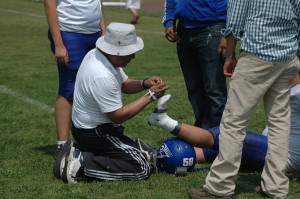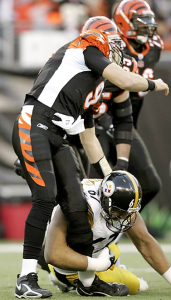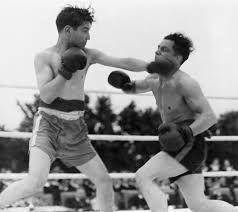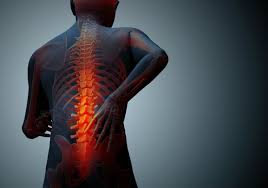Posted on
August 02, 2018 by
Ashley Andrews
 Sports provide numerous benefits, from teamwork to dedication to improving fitness. They can also, however, be dangerous. It is important to understand how to protect yourself from the dangers of sports and how to prevent injuries. If injuries do occur, knowing how best to treat them is the key to a quick recovery.
Sports provide numerous benefits, from teamwork to dedication to improving fitness. They can also, however, be dangerous. It is important to understand how to protect yourself from the dangers of sports and how to prevent injuries. If injuries do occur, knowing how best to treat them is the key to a quick recovery.
Knee Injuries
Most sports can cause a knee injury if people aren’t careful. Stretching is one of the best ways to prevent this type of injury. Perform a quad stretch by grabbing your ankle and pull your leg behind your body. This will stretch out your knees and quadriceps. A simple toe touch will suffice as well.
An ACL injury is one of the most common injuries, often happening during games like soccer and football where legwork is important. A knee replacement surgery may the final option if rehabilitation and pain medication do not work. Look at total knee replacement pictures and you’ll see the difference between a knee that needs replacement and one that has been replaced. Read the rest of this entry →
Tags: knee injurySports Injuries
Category
Health & Fitness, Sports Medicine
Posted on
August 01, 2018 by
Joe Fleming
 Tendonitis of the knee (also known as patellar tendonitis or “jumper’s knee”) is a highly common injury among athletes.
Tendonitis of the knee (also known as patellar tendonitis or “jumper’s knee”) is a highly common injury among athletes.
Several well-known professionals — including third baseman Brandon Inge, pitcher Oliver Perez, and tennis player Rafael Nadal — have all struggled with chronic cases of patellar tendonitis throughout their careers.
Because tendonitis of the knee is common and comes on gradually, many athletes assume that they don’t need to take their recovery from it as seriously as they would need to take a more acute injury like an ACL tear. In reality, though, chronic tendonitis can be incredibly debilitating and could potentially sideline an athlete completely.
Read on to learn about some of the most common mistakes athletes make when trying to manage their tendonitis and what you should be doing instead.
What is Patellar Tendonitis?
Many athletes suffer from patellar tendonitis without even knowing exactly what it is. Patellar tendonitis occurs when the tendon that connects the tibia (shin bone) and patella (knee cap) becomes irritated and inflamed.
Patellar tendonitis most often results from repetitive knee strain. This repetitive strain creates several small tears in the tendon. Over time, these tears weaken the tendon and cause it to become inflamed.
Some of the most common issues that contribute to patellar tendonitis include:
Symptoms of patellar tendonitis often come on gradually and usually aren’t noticeable right away. When they do start to notice symptoms, most people report experiencing some pain and tenderness around their kneecap, especially when they’re getting down into or standing up from a squatting position. Some also notice swelling and a burning sensation.
These symptoms are usually sporadic at first and get worse and last longer as the tendon undergoes more stress and damage. Read the rest of this entry →
Tags: Patellar tendon
Category
Health & Fitness, Sports Medicine
Posted on
July 15, 2018 by
Joe Fleming
 Knee dislocations are not as common as other sports injuries, but they do still happen, especially in contact sports like football. In fact, football players are probably most susceptible to knee dislocations.
Knee dislocations are not as common as other sports injuries, but they do still happen, especially in contact sports like football. In fact, football players are probably most susceptible to knee dislocations.
Cincinnati Bengals quarterback Carson Palmer dealt with a knee dislocation in 2006, and Chicago Bears tight end Zach Miller experienced one during the fall of 2017.
If you or someone you love is a football player, it’s imperative that you know how to prevent and treat a knee dislocation. This is a serious injury and the better prepared you are, the greater chance you have of recovering successfully.
What is a Knee Dislocation?
A knee dislocation occurs when the bones that form the knee joint (patella, tibia, and femur, specifically) undergo a great amount of force and are pushed out of place. This is a very painful injury that is always considered emergent.
Symptoms of a Knee Dislocation
The most common signs of a dislocated knee include:
You will also be able to see that a portion of the knee has been shifted out of place. There’s very little guesswork involved when it comes to diagnosing a knee dislocation. Read the rest of this entry →
Category
Sports Fitness, Sports Medicine
Posted on
July 04, 2018 by
Joe Fleming
 Boxing may be a popular sport, but one must not forget that this still a very aggressive and high impact combative contest. Such intense activities will always come with injuries, hence why you have to base your training on ways to avoid any damaging mishaps. Here are the 10 most common boxing injuries to watch out for.
Boxing may be a popular sport, but one must not forget that this still a very aggressive and high impact combative contest. Such intense activities will always come with injuries, hence why you have to base your training on ways to avoid any damaging mishaps. Here are the 10 most common boxing injuries to watch out for.
1. Boxer’s Fracture
The aptly named boxer’s fracture is when the small bones under your ring and pinkie finger break. Said injury is followed by a sharp pain, swelling, and an inability to move your fingers. If your bones are still aligned, then your chances of a full recovery are promising, but any misalignment may require surgery. Avoid this problem by practicing the correct punching technique and ensure your diet is rich in calcium.
2. Carpal Bossing
Common between the ages of 20 and 40, carpal bossing is when the bones in the back of your palm overgrow and cause uncomfortable lumps to surface. Annoyingly, there is not much you can do once this occurs but you can prevent it by using the correct gloves and making use of hand wraps. If the pain becomes unbearable, wear a wrist guard after hours, take anti-inflammatory medication, and speak to your doctor about steroid injections. Thankfully, most people heal quite quickly from carpal bossing, but it will temporarily hinder your training.
3. Arthritis
With is so much repetitive stress focused on one place, the cartridge and joints in a boxer’s hands may deteriorate and swell. This is a progressive condition otherwise known as arthritis and has even forced professional boxers into an early retirement, as was the case for world heavyweight champion James J. Braddock (1935 to 1937). As before, take care of your hands, while exercising additional caution if your routine includes a lot of bag work. Read the rest of this entry →
Tags: BoxingSugar Ray Robinson
Category
Boxing, Sports Medicine
Posted on
June 28, 2018 by
Dixie Somers
 Whenever you play a sport or exercise your body, you are increasing your risk for injury no matter how careful you are. However, by following safe steps, knowing your body’s limitations and protecting against the most common types of injuries, you can stay safe and stay in the game. Here are four simple ways that you can avoid stressing any part of your body or landing in the emergency room rather than being on the field.
Whenever you play a sport or exercise your body, you are increasing your risk for injury no matter how careful you are. However, by following safe steps, knowing your body’s limitations and protecting against the most common types of injuries, you can stay safe and stay in the game. Here are four simple ways that you can avoid stressing any part of your body or landing in the emergency room rather than being on the field.
Always Warm Up and Cool Down
Warm ups and cool downs often seem pointless to new exercisers or players. Most people want to immediately get to the good part, which is the game or exercise itself. However, warm ups and cool downs, which should last for the first five and last five minutes of every game respectively, are vital for protecting muscles and connective tissues from strain and injury. A good warm up will bring blood into the muscles that you plan to use while a cool down should return your heart rate and breathing to normal.
Wear Protective Gear
Protective gear is designed to guard the most danger-prone areas of your body from injury. For example, a helmet is used to protect your head from concussions and other brain injuries. Knee and elbow pads protect your joints that tend to stick out the most from your body. Other good forms of protective gear depending on the sport include mouthguards, shin guards, shoulder pads and eyewear. Read the rest of this entry →
Category
Health & Fitness, Sports Medicine
Posted on
June 28, 2018 by
Lora Young
 If you’ve injured your back recently playing sports (or doing something else), you might need a chiropractor. While finding one isn’t necessarily difficult, there are actually a few key things you need to remember when looking for the best option for you. In this article, we’re going to look at them.
If you’ve injured your back recently playing sports (or doing something else), you might need a chiropractor. While finding one isn’t necessarily difficult, there are actually a few key things you need to remember when looking for the best option for you. In this article, we’re going to look at them.
1. Do they have special experience in sports injuries?
First things first — you’ll want one who’s got specific experience treating sports-related injuries. Many chiropractors will have worked with sports teams in the past, so you might be able to find a recommendation if you ask your teammates or coaches.
2. What are their general qualifications?
Depending on your location, a chiropractor could have a wide range of different qualifications and certificates. Make sure you’ve checked them all fully before agreeing to treatment.
3. How long have they been practicing?
Are they a recently qualified chiropractor or do they have years of experience? This might be something you should consider, although even newly qualified chiropractors can still be good enough for the job. Read the rest of this entry →
Tags: back injury
Category
Health & Fitness, Sports Medicine
 Sports provide numerous benefits, from teamwork to dedication to improving fitness. They can also, however, be dangerous. It is important to understand how to protect yourself from the dangers of sports and how to prevent injuries. If injuries do occur, knowing how best to treat them is the key to a quick recovery.
Sports provide numerous benefits, from teamwork to dedication to improving fitness. They can also, however, be dangerous. It is important to understand how to protect yourself from the dangers of sports and how to prevent injuries. If injuries do occur, knowing how best to treat them is the key to a quick recovery.







